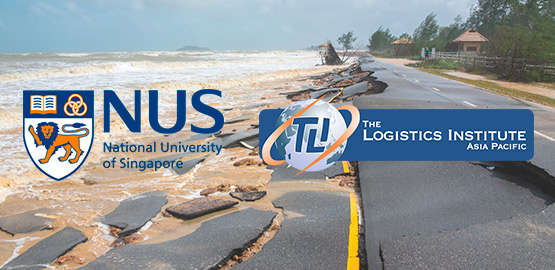

Indonesia, highly prone to disasters such as earthquakes, tsunamis, and volcanic eruptions, struggles with poor logistics infrastructure, limited storage facilities, and long travel times to remote islands, which hinder response times. The Logistics Institute – Asia Pacific (TLI-AP) was tasked with designing a prepositioned relief supply network to cover all six main islands.
Using operations research, TLI-AP shortlisted nine low-risk, high-accessibility locations from 22 candidates. The team then applied anyLogistix to select the six optimal sites, model disaster scenarios, and optimize facility flows for minimal response time, reduced risk exposure, and lower costs. Robustness tests ensured consistent performance under varying conditions.
The Logistics Institute – Asia Pacific (TLI-AP), a premier research institute in Asia Pacific nurturing logistics excellence in research and education, was approached by one of the leading humanitarian organizations to address a logistics network design challenge for disaster preparedness so as to support the Indonesian National Government. This organization plays a crucial role in the Logistics Cluster*, and it is part of their mandate to support national governments of disaster exposed countries in building logistics capabilities to cope with humanitarian crises.
Located on the edges of two continental and two oceanic tectonic plates, Indonesia is home to more than 500 volcanoes (128 of which are active), and threatened by some of the greatest seismic activity in the world. Furthermore, much of this activity is offshore and brings the significant added risk of tsunamis. The country experiences recurring small/medium scale natural disasters compounded by a high risk of less frequent, but very large-scale, natural disasters that necessitate a systemwide international humanitarian response.
When disasters strike, especially in remote areas of the Indonesian archipelago, existing response capacities are invariably stretched. Besides operational challenges brought about by the country’s geographical characteristics, national disaster response capabilities are further limited by:
The latter is particularly critical in terms of the performance of relief operations. TLI-AP was tasked with considering the prepositioning of relief supplies at strategic locations across Indonesia to enhance national disaster response capabilities. The developers wanted to select the most appropriate locations for establishing an efficient network of emergency response facilities in Indonesia.
The logistics network design requirements included the following restrictions:
TLI–AP chose the anyLogistix (ALX) platform to address the challenge of logistics network design posed by the humanitarian organization because of its flexibility and ease of use. It was able to handle the complex problems and give robust results. Also, anyLogistix enabled the TLI–AP research team to uncover a deeper level of detail in their logistics model to address limitations unseen at the strategic level.
The project began by designing a baseline network through an ad-hoc decision support framework, which fully leveraged operational research techniques. This preliminary assignment allowed the TLI–AP team to select a pool of nine potential nodes (out of the initially suggested twenty-two) which satisfied both base criteria of low exposure to natural hazards and high accessibility to supporting logistics infrastructures, such as airports and ports.
Using anyLogistix, the TLI–AP research team then defined the optimal configuration for a logistics network with the selection of the six most appropriate locations and optimal flows across the nodes. Eleven large scale humanitarian emergencies, ninety-eight small/medium scale disasters, along with thirty-four risk exposed areas were accurately modeled and tested. The team then ran optimizations on each scenario to identify the best logistics network configuration in terms of response time, risk exposure, and costs.
Using anyLogistix, TLI-AP research team designed a comprehensive decision support framework for stockpile prepositioning in the context of humanitarian response, encompassing an initial filtering of candidates location using operations research techniques, a fine tuning of the solution via network optimization, and finally a robustness stress test using simulation.

By focusing on network optimization, this work improved the capabilities of the Indonesian national government to cope with disasters by achieving an average transportation time to disasters affected zone of 0.5 days. Compared to the basic solution identified through operations research, the logistics network identified via anyLogistix Network Optimization allows to reduce transportation cost by 28%, with no compromise to be made on the service level dimension.
Download the case study as a PDF
* Logistics Clusters is an Inter-Agency Standing Committee in charge of providing coordination and Information Management to support operational decision-making and improve the predictability, timeliness and efficiency of the humanitarian emergency response